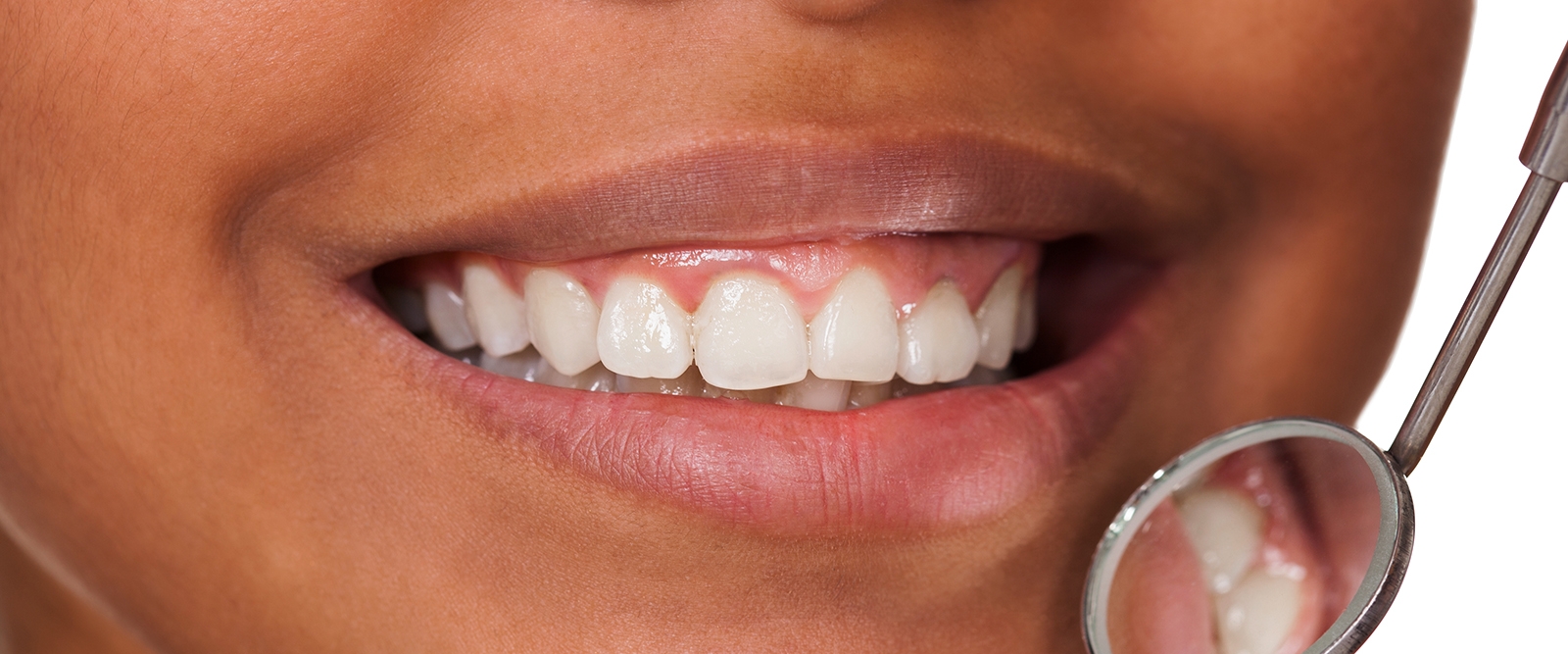
Causes and Treatments of Leukoplakia
Leukoplakia is a dental condition categorized by the development of thick, white patches on your gums, cheeks, and sometimes on a person’s tongue. They can’t just be scraped off, and professional treatment is recommended if you notice their onset. Below, we take a closer look at what causes the condition, and how a dentist or doctor can help you treat it.
Causes and Symptoms of Leukoplakia
Doctors and dentists don’t really know what causes leukoplakia, but they suspect that it is brought on by chronic irritation from tobacco products. Most cases of leukoplakia are noncancerous, although some can be cancerous, and mouth cancer may form next to areas of leukoplakia. If you notice any odd formations, or white areas with red speckles, consult a medical professional.
Symptoms of leukoplakia include:
- White or grayish patches on the gums, cheeks or tongue.
- Thickened or hardened patches in your mouth.
- Speckled red dots on the white patches.
- Raised red lesions.
- Persistent changes in tissues of your mouth.
- Ear pain when swallowing.
- Slow reduction in your ability to open your jaw.
Diagnosis and Treatment of Leukoplakia
Diagnosing the condition can be done by your dentist or doctor. They will look for the above symptoms, and they’ll ask about your tobacco use, family health history and rule out any other potential causes. If your dentist wants to ensure that the formation is non-cancerous, they may test the substance using an oral brush biopsy. This is a non-invasive procedure that collects cells from the source. A more invasive but more conclusive method involves removing some of the tissue and having it analyzed.
If the tests show that cancer is present, it will be surgically removed from your mouth. If the entire piece can be removed, the only additional treatment you may need is regular monitoring. If the development is non-cancerous, treatment involves removing part or all of the patches, stopping the source of irritation (giving up cigarettes or chewing tobacco) and getting regular check-ups from your dentist. On rare occasions, the condition can be caused in part by a weakened immune system, which means the dentist or doctor will also provide medications in addition to regular treatment.
Bloomington Dental Clinic
If you notice symptoms of leukoplakia, make an appointment with your dentist or family physician. The sooner it is treated, the better outcomes are. For more information, or to talk to Dr. Brooks about a mouth condition, reach out to his office today.
Bleeding Gums
Why Your Gums Might be Bleeding
There are many potential reasons why your gums may start bleeding – some of which are harmless, and some of which should be cause for concern. In this article, we are going to walk through some of the possible causes of bleeding gums, and what to do when your gums start bleeding.
Flossing & Brushing
In many cases, bleeding gums are no cause for alarm, but it is almost always a sign of the body's inflammatory response to bacteria. If you haven’t flossed in a while and have just started a new flossing routine – your gums will likely bleed a little as they adjust. This bleeding will typically go away on its own in a week or so if using proper home care. If it doesn’t – contact your dentist. Flossing regularly is the best way to prevent this from happening. Brushing your teeth too rigorously, or with a toothbrush that isn’t soft enough can also cause bleeding gums.
Pregnancy
Pregnant women also often experience bleeding gums as a result of “pregnancy gingivitis” – an inflammation of the gums that can arise during pregnancy. When pregnant, the immune response to the plaque and bacteria on the teeth is more responsive, resulting in the bleeding. Many times if the brushing and flossing are improved the bleeding will go away.
Gingivitis
Bleeding gums may also be a sign of gingivitis – which is an early stage of gum disease. Brushing and flossing regularly is the best way to guard against gingivitis. The condition is also reversible if caught early enough. Your dentist can help you through the treatment process.
Smiles for Life in Minnesota
If you are experiencing problems with bleeding gums, schedule an appointment with a dentist today. Dr. Tim Brooks and the rest of the team at Smiles for Life make it a point to treat each patient with the respect and compassion that they deserve. At Smiles for Life, we offer family and cosmetic dentistry services to patients in Bloomington and the surrounding areas of the Twin Cities. Contact us today to set up your appointment with Dr. Brooks at one of our Smiles for Life dental clinics.
Bad Breath – Causes, Prevention & Treatment
Bad breath (aka “halitosis” in the medical world) is an annoyance at best and a potential sign of a serious condition at worst. There are many things that can cause bad breath, and several conditions that it may indicate. In this article, we are going to discuss bad breath and how it relates to your oral health. We will talk about some of the causes of bad breath, as well as some tips for prevention and treatment.
What Causes Bad Breath?
There are several potential factors that can lead to bad breath. Here are a few of the most common:
- Smoking
- Eating Foods with strong odors (onions, garlic, etc.)
- Dry mouth
- Gum disease
Bad Breath Prevention & Treatment
Perhaps the best way to prevent bad breath is to practice good oral hygiene. That means brushing your teeth twice a day, flossing once a day, and visiting your dentist for routine cleanings twice a year.
Beyond that, preventing and treating bad breath really depends on the underlying cause. If your bad breath is the result of your diet (consuming a particular food), or a lifestyle habit (smoking, for example), cutting down on those factors will likely help reduce the halitosis. If gum disease is the culprit, additional treatment may be required, and your dentist can help with that.
Smiles for Life Dental Clinic
At Smiles for Life Dental Clinic, we provide family and cosmetic dental care to patients throughout the Twin Cities. Dr. Brooks and his team of hygienists make it a point to treat each and every patient that walks through our doors with the respect that they deserve. Whether you need to schedule a routine cleaning, or you’re interested in learning more about invisible braces, we’ve got you covered. Contact us today to set up your appointment at our Bloomington or Farmington dental offices.
Gum Disease Health
How Dental Issues Can Impact Other Areas of the Body
Most people know that neglecting your oral hygiene can lead to bad breath, cavities, and gum disease. But what many people do not realize is that failing to take care of your dental health can lead to health issues in other parts of the body. In this article, we are going to talk about how issues in your teeth and gums can impact other areas of your body.
Heart Disease & Stroke
Gum disease is bad, not only for your gums but for your heart too. Periodontitis can increase your risk of developing heart disease or having a stroke. But why is that the case? Bacteria that build up in the gums can travel through the bloodstream to other areas of the body. These bacteria can build up in the arteries, causing blood clots, and leading to stroke and various heart conditions.
Cancer
Bacterial build-up in the gums can lead to gum inflammation – this is one of the most common symptoms of gum disease. These bacteria can cause similar reactions to tissues in other areas of the body. Inflammation has long been linked to the development of cancer, according to the National Institutes of Health.
Diabetes
Gum disease and bacteria can also increase a patient’s risk of developing diabetes.
Preventing These Issues
It’s essential to keep up with your oral hygiene – not just for your teeth and gums but for the rest of your body too. Make sure you’re brushing and flossing daily, and that you visit your dentist on a regular basis.
Bloomington Dental Health
At Smiles for Life, we have the ability to handle all of your family and cosmetic dentistry needs. For decades, we have been providing top-notch dental care to patients in Bloomington, Farmington, and the surrounding Minnesota areas. If you’re having tooth pain, or you just need to schedule a routine check-up and cleaning, don’t hesitate to give us a call. Contact our dental clinic in Bloomington to set up your appointment today!
Periodontal Gum Care
The Basics of Periodontal (Gum) Care
Although gum disease is easily preventable, many patients still suffer from its effects. By being proactive about your periodontal (gum) care, you can help prevent gum disease and other health issues. In this article, we are going to discuss the basics of periodontal gum care.
What is Periodontal Disease?
Periodontal disease essentially means gum disease. “Peri” means around, and “Odontal” means teeth, so periodontal disease impacts the gums and other structures that surround the teeth. Bleeding of the gums is perhaps the most common sign of periodontal disease. If you notice any bleeding from your gums, it’s time to set up an appointment with your dentist to fully diagnose your condition and talk about treatment options.
Gum disease poses a serious threat to your oral health – and can even have a negative impact on other areas of your body. It’s important to take steps to prevent gum disease before it progresses. Here are a few things you can do to prevent gum disease and other periodontal conditions:
- Visit your dentist regularly for checkups
- Brush and floss on a regular basis
Preventing Gum Disease
The best way to prevent periodontal disease is with a periodontal evaluation from your dentist. A periodontal evaluation assesses all of the following:
- Your overall teeth and gum health
- Plaque levels
- Your bite
- Any potential risk factors
Dental Clinics in Bloomington, MN
Dr. Tim Brooks is an experienced family and cosmetic dentist who has been practicing in Minnesota for decades. Whether you need a routine dental cleaning, or you need a crown put in, we’ve got you covered at Smiles for Life. We work hand-in-hand with every patient to provide compassionate, individualized care. Contact Smiles for Life today to set up your appointment at our MN dental offices – located in Bloomington MN.
Book Appointment
Or call us at:
(952) 888-2300



